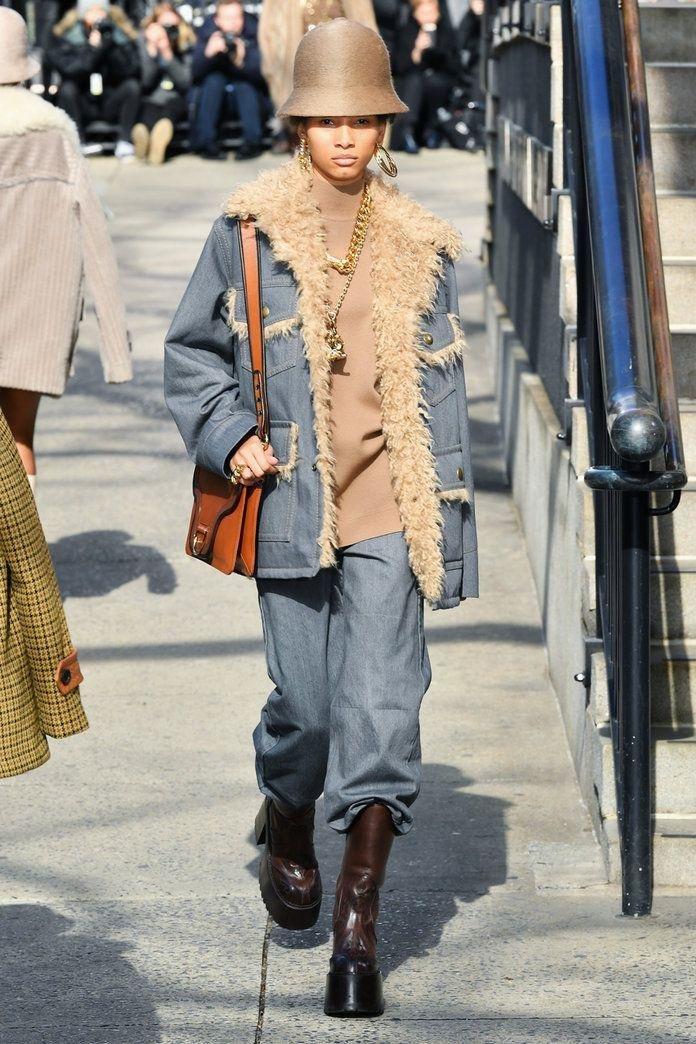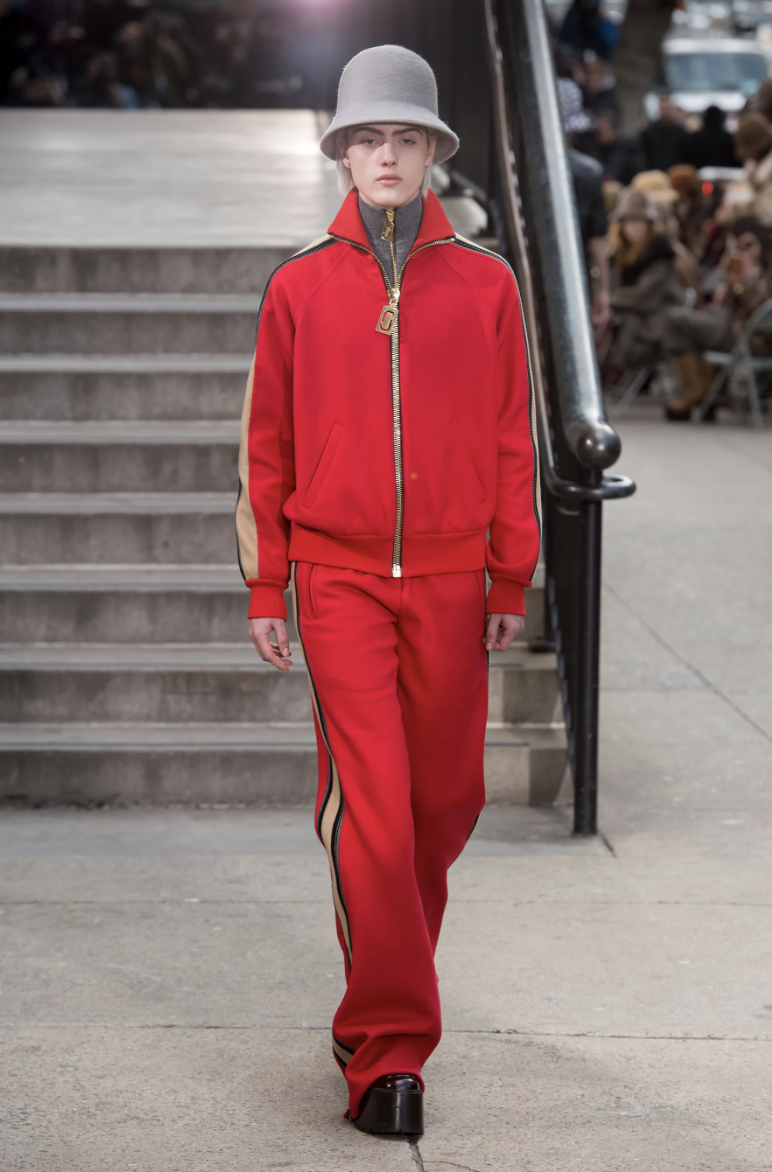From Block Parties to the Runway: The Evolution of Hip Hop Fashion and its Impact on High Fashion Trends
BY KATHERINE SINNER
EDIT BY CAROLINE GARELL
Fashion trends are often intertwined within artistic and musical communities. The groups of people within these communities develop unique ways to express themselves. Their fashion tastes are largely different from the fashions of the mainstream, their styles niche and bold. With these niche styles, comes a rich history behind them. Many know that hip-hop culture has influenced an array of fashion trends, but many don’t know the “why” behind it.
Hip-hop was born in 1970’s New York amidst the disco craze. There were communities of Caribbean immigrants and the African-American youth living in the Bronx. Block parties were social events held throughout the neighborhood, which doubled as a way for people to express their own individual outfits.
“Early pioneers like DJ Kool Herc, Grand Wizzard Theodore and Grandmaster Flash started the practice of using two turntables to extend the dance break in funk and soul records — creating a seamless sound loop ideal for dancing to endlessly,” Jian Deleon said in a High Snobiety article. These early artists would create their own tracks by adding different beats and instruments.
A new culture was emerging as rap battles, emcees and break dancing gradually grew in popularity. People of various backgrounds were coming together in their shared experiences of life within the Bronx through this new style of music. It’s no surprise that they adapted their own unique fashion styles to express this identity. Men and women started to wear Adidas track suits with their Adidas sneakers, baggy denim with Puma sneakers and big shearling coats in the winter. Block parties sat center-stage as a way to show off trends and outfits.
The track suit originates in Germany, when Adidas debuted a fresh look for soccer athletes in 1967. Their design featured bold branding and displayed the same triple-stripes as seen on their sneakers. The track suit spread across athletes and sports fans. One prominent soccer fan was reggae singer Bob Marley. He began wearing track suits alongside other reggae artists. As this casual athletic gear boomed in popularity, the breakdancing B-boys of the 1970’s NYC hip-hop scene also discovered the track suit. The thin, breathable garment and its bright colors made it a popular choice. By the 1980’s, it was a known signifier of the hip-hop fashion scene.
“From the start, this is what separated hip-hop from its rock-and-roll predecessors. Movements like punk were founded on anti-fashion ideals and stood in contrast to consumption and capitalism. Hip-hop fully embraced it from the start, seeing dressing up as its own competition — and every rapper boasted he dressed better than the rest,” noted High Snobiety.
The man many have come to know as Dapper Dan, born Daniel Day, opened a store in 1982 at 43 East and 125th Street. He utilized fabrics from high street luxury brands such as Gucci, Louis Vuitton and Fendi, taking those fabrics and repurposing them into tracksuits and bomber jackets. In the 1980s, some of hip-hop’s biggest names would sport Dapper Dan designs. Tommy Hilfiger and Polo Ralph Lauren also became popular choices among the hip-hop community.
Female rap artist Aaliyah of the late 90’s and early 2000’s established a cool laid back style within the hip-hop genre. People came to recognize her for these baggy jeans and little crop tops, where she was often seen in large athleticwear and sunglasses. She was also a fan of the trend of the time, the exposed underwear. Aaliyah had an appreciation for fashion. She was photographed at the Fall 2000 Tommy Hilfiger fashion show in New York.
One of the most well known rappers of all time also had his influence on fashion: Tupac Shakur. He was known for his baggy denim overalls and snapback hats, his Timberland work boots and his Carhartt. Fashion houses noticed his style and began inviting him to shows. Gianni Versace would invite Shakur to his shows in Milan while dressing him in golden suits. Long after his untimely passing in 1996, his face is still printed onto clothes, his likeness was displayed at the music festival Coachella and designer Alexander Wang had referenced the rapper in his menswear pieces: it's clear that he has had a long-lasting influence in pop culture as well as fashion.
Artists often displayed bold and unique fashion takes in their music videos. The 1980’s female duo Salt-N-Pepa coordinated vibrant looks in spandex bodysuits and bulky leather jackets in their hit song “Push It.” They accessorized with large gold chains — a recurring motif in many hip-hop music videos. The artist M.C. Hammer wore a pair of loose fitting pants which resembled Asian harem pants in his music video for “U Can’t Touch This.” The crotch dropped down low and the ankles were tapered. The pants became such a hit that the public began referring to these harem pants as “Hammer pants.” Rapper Rick the Ruler played with layering gold chains, rings and loved Kangol hats. He expressed his style in his 1985 song with Doug E. Fresh “La Di Da Di.”
As rap and hip-hop culture continued to grow through the 1990’s and early 2000’s, so did the brands that artists were able to afford. Soon they began to elevate their style — and Balenciaga became extremely popular among the community. According to L’Officiel Singapore, rappers often identify themselves through these luxury fashion brands. Some of the most commonly cited brands in modern hip-hop are Balenciaga, Fendi, and Gucci with hundreds of mentions between the three. One of the first rappers to reference Balenciaga in a song was Chris Brown, followed by Nicki Minaj and Pusha T. This particular brand hadn’t become too popular yet, but that wouldn’t last long.
A couple years later in 2012, Alexander Wang was appointed creative director of Balenciaga, which many viewed as a turning point for the brand. Wang brought a new personality into the clothing and, some say, perhaps a more commercial and sellable aspect to the brand as well. Cardi B mentioned Balenciaga in a 2018 rap song. Her love of Balenciaga soon launched her into the front-row at one of the brand’s fashion shows. Rap and hip-hop artists continue to be recognized for their appreciation of these luxury brands as they navigate their personal styles and identities.
Fashion’s relationship with hip-hop doesn’t stop there. For his Fall 2017 women’s fashion show, Marc Jacobs sent models down the runway wearing tracksuits layered with gold chains, outfits that paid homage to the styles worn in early days of hip-hop. They sported retro coats and thick headbands. Jacobs’ himself even shared that he was inspired by the Netflix documentary “Hip-Hop Evolution.”
Italian luxury brand Gucci partnered with aforementioned Dapper Dan in 2017 to produce a collaboration. The collection had a real 80’s and 90’s feel to it — specifically the logo bomber jackets, gold chains and the velour tracksuits. The collection was colorful and loud. It was bold and made a statement. It was reminiscent of Dan’s early shop days.
A recent example can be found in one of the most notable connections to fashion, Louis Vuitton and Virgil Abloh, who would be named creative director to the house in 2018 and remain until his death in 2021. His collections were often streetwear inspired, but he had a unique way of elevating the designs into something simultaneously sophisticated. Abloh’s handbags are especially unique — handbags shaped like an airplane, glowing in the dark, featuring beautiful and wildly realistic landscapes, some of them almost comically long in size. Abloh had fun with his work: it was cool and it was chic.
The link between fashion and hip-hop is undeniable, though it didn’t happen overnight. Many people were apprehensive to accept the culture into the limelight due to things like the dangerous rivalries, such as the East Coast and West Coast rivalry or the rise of Comtpon’s N.W.A. These elements would have made the genre a hard sell to luxury houses at the time. But as the music became more popular, the culture gained an increasingly widespread popularity. People acknowledged the unique fashion tastes of rap and hip-hop artists.
“Fashion has always been an important part of the hip-hop identity because fashion has always been an important part of black identity in America,” said producer and filmmaker Sacha Jenkins, director of the 2015 hip-hop fashion documentary “Fresh Dressed.” “Because when you don’t have much ownership over where you can land in society, your financial situation, your educational situation, the one thing you can control is the way you look.”










